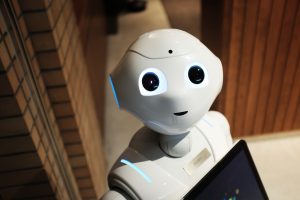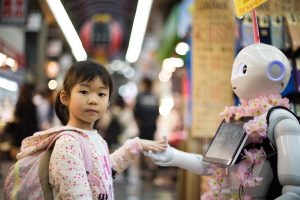Have you ever felt lost in assignments and wished someone could help you through them?
It’s like when I stumbled upon an EssayPro that promised to aid students in finding a reliable academic assistance platform. I’m not here to chat about study platforms, but the mention leads us to an exciting revelation.
The support we often receive, knowingly or not, comes from the invisible workforce of the digital age: AI bots.
Picture this: It’s not just your smart home device or your smartphone’s voice assistant. AI bots have permeated almost every digital corner. And today, we’ll try to understand their diverse manifestations.
What Exactly Is an AI Bot?
At its core, an AI bot is a piece of software designed to perform tasks autonomously based on the input it receives.
These tasks can range from simple ones, like setting an alarm, to complex ones, like analyzing big data. The ‘AI’ in AI bots stands for artificial intelligence, which means these bots can learn and adapt over time.
Different Forms of AI Bots
Chatbots
Probably the most commonly encountered type, chatbots are all about communication. Whether you’re contacting customer service, ordering a pizza, or just asking for the weather, there’s a good chance you’re talking to a chatbot. These are designed to simulate human conversation and are getting better by the day.
Virtual Personal Assistants
Siri, Alexa, and Google Assistant? Ring any bells? These are your sidekicks, ready to set reminders, play music, or even tell you a joke. They process natural language and strive to make your life a tad easier.
Process Automation Bots
These might sound complex, but they’re behind many daily operations, especially in businesses. These bots are all about efficiency. They handle repetitive tasks like data extraction, transaction processing, and even sending out emails.
Benefits of AI Bots
So, why are AI bots bringing radical changes to industries? Here are just a few reasons for that:
- Efficiency. AI bots can work tirelessly 24/7, ensuring tasks get done swiftly.
- Cost-Effectiveness. Once set up, they can reduce operational costs by minimizing manual labor.
- Scalability. Easily adapted to increasing workloads, they perform many tasks at a time.
- Adaptability. With machine learning at their core, they’re improving and adapting to new challenges.
Potential Downsides and Concerns
While AI bots are transforming our digital experiences, they’re not without their issues:
- Privacy Concerns. With data being the fuel for many AI bots, there are often worries about how personal information is used or misused.
- Dependency. Overreliance on AI can hinder our problem-solving skills or even impact job markets.
- Errors. AI bots are not infallible. Mistakes, though rare, can happen and can sometimes have significant consequences.
How Do They Work?
At their core, AI bots operate on a set of algorithms and data. To understand how AI bots work, we need a blend of computer science, data analysis, and recognizing that these bots evolve as technology advances.
Let’s explore the principles of AI bots’ work one by one:
Foundations of Learning
The brain of any AI bot is its ability to learn. This is achieved through two methods:
- Supervised Learning. According to this method, AI bots are provided with input-output pairs. They are essentially “taught” by showing them examples. For instance, a chatbot might be trained using thousands of conversations to understand user queries and respond effectively.
- Unsupervised Learning. Unlike the supervised method, AI bots independently find patterns and structures within the data. It’s particularly useful for tasks like clustering and association.
Neural Networks and Deep Learning
One can’t talk about AI bots without mentioning neural networks. They resemble the human brain’s biological networks and are based on complex algorithms, allowing them to recognize patterns. They interpret sensory data, distinguish among the data, and label or cluster raw input.
Deep learning is a subdivision of machine learning where neural networks have multiple layers. Each layer processes the input from its previous layer, refining and improving the accuracy of the bot’s operations. This deep learning capability has propelled voice recognition, image interpretation, and natural language processing advancements.
Natural Language Processing (NLP)
NLP drives a bot’s ability to comprehend, analyze, and replicate human language. It’s why Siri understands your requests, or chat support can help answer your queries. NLP combines computational linguistics with statistical, deep learning, and heuristic models.
Continuous Feedback and Iteration
While initial training sets the foundation, AI bots continually evolve. They use a feedback mechanism known as reinforcement learning.
Instead of being taught what actions to take, AI bots determine the course of action and learn from mistakes.
They make decisions, observe outcomes, and adjust their strategies based on positive or negative feedback. Imagine teaching a bot to play a game ‒ it’ll improve with each match, understanding better strategies to win.
Integration With Other Technologies
AI bots often don’t operate in isolation. They’re integrated with other tech tools and platforms to enhance their functionality. For instance:
- IoT (Internet of Things). When combined with IoT devices, AI bots can gather real-time data, process it, and make instantaneous decisions. Think of smart homes that adjust lighting or temperature based on your preferences.
- Cloud Computing. With the cloud’s expansive storage and processing capabilities, AI bots can quickly access vast amounts of data.
In Conclusion
From simplifying daily tasks to powering massive industrial operations, AI bots become indispensable. Yet, like all tools, their effectiveness depends on how we use them. So, we must embrace the benefits while being aware of potential pitfalls. This way, we’ll ensure we sail smoothly in this AI-driven age.
So, next time you read an EssayPro review or order a pizza online, remember: there’s probably an AI bot working behind the scenes, making it all happen.

